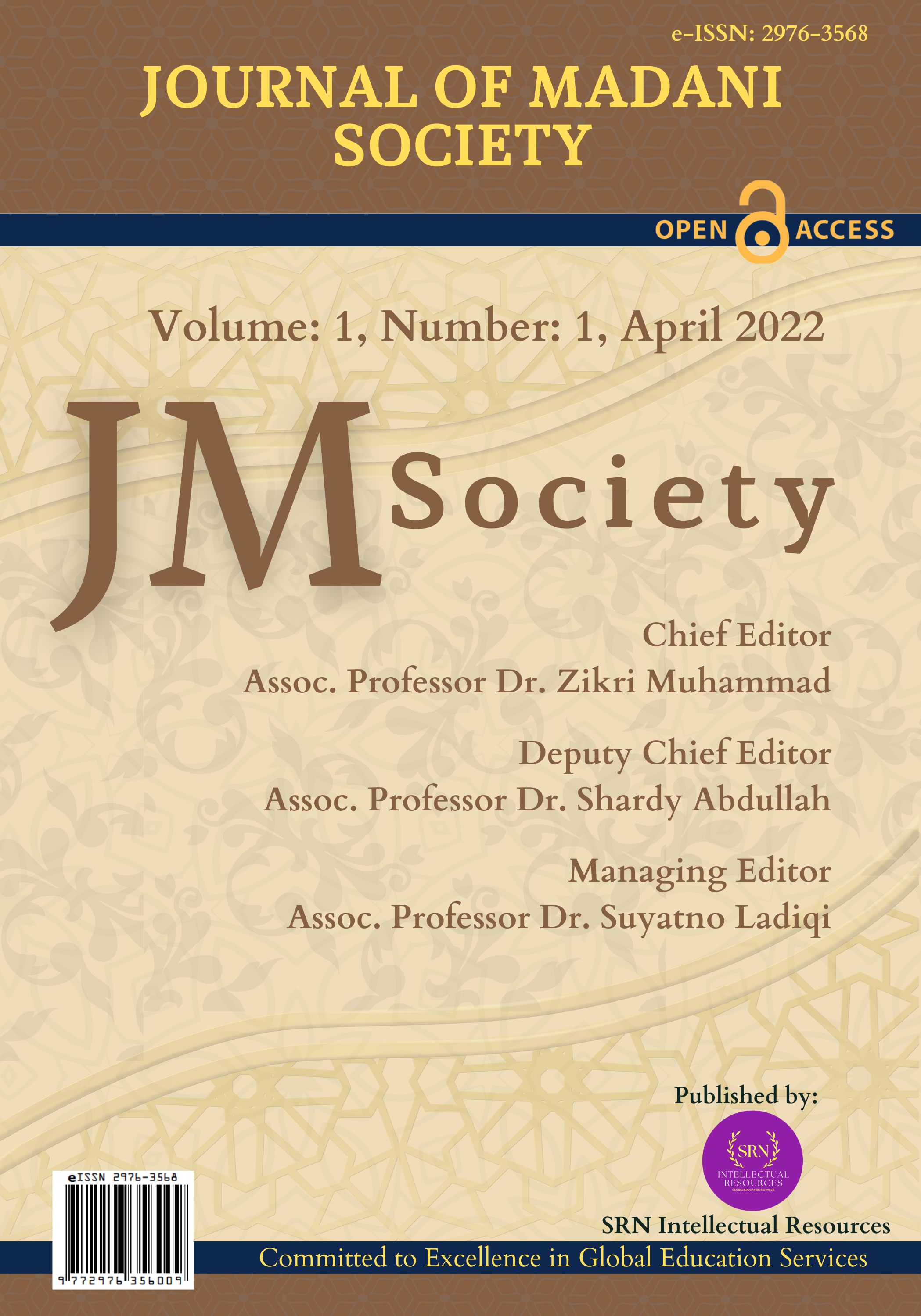A Study of Micro, Small and Medium Enterprises (MSMEs) during Covid-19 Pandemic: An Evidence using Economic Value-Added Method
https://doi.org/10.56225/jmsc.v1i1.123
Keywords:
creative economy, economic value added, micro, small and medium enterprises (MSMEs), COVID-19 pandemic, Indonesia contextAbstract
The global COVID-19 pandemic has impacted various sectors, especially the economic sector. It also significantly impacts tourism and trade industries, including Micro, Small, and Medium Enterprises (MSMEs) in Indonesia. Creative products have great potential to deliver a city industry into an advanced and independent creative economy. However, information technology for creative product business resource management is still under investigation, which has weaknesses in administrative, financial, process, and access to banking and financial institutions. Thus, this study seeks to formulate a strategy for improving the MSMEs sector in Lhokseumawe. This study was designed using Mix methods by conducting interviews with 200 MSMEs in Lhokseumawe. The Economic Value-Added is applied in this study, which aims to increase the productivity of MSMEs via the introduction of the acceleration board and collaboration with the Indonesia Stock Exchange. Also, the focus group discussion was conducted by inviting local officials from related Lhokseumawe and academics to complete the model for developing a strategy to increase MSME productivity by focusing on the Economic value-added method. Finally, this study recommends sustainable strategies for the MSMEs in Lhokseumawe when running their business during the Covid-19 pandemic.
Downloads
References
Brannen, J. (2017). Combining qualitative and quantitative approaches: an overview. In Mixing methods: Qualitative and quantitative research (pp. 3–37). Routledge.
Brigham, E. F., & Houston, J. F. (2009). Fundamentals of financial management, concise Edition. Cengage Learning.
Chin, W. W. (1998). Commentary: Issues and opinion on structural equation modeling. MIS Quarterly, 22(1), 7–17.
Darmadi, D. (2017). Pengaruh Kepemimpinan Transformasional Dan Orientasi Pembelajaran Karyawan Pada Kreativitas Karyawan Dengan Creative Self-Efficacy Sebagai Variabel Pemediasi. Universitas Gadjah Mada.
Ghozali, I., & Latan, H. (2015). Partial least squares konsep, teknik dan aplikasi menggunakan program smartpls 3.0 untuk penelitian empiris. Penerbit Universitas Diponegoro.
Hadiwibowo, R. N. (2009). Analisis pengaruh kinerja keuangan terhadap return saham pada perusahaan peserta dan non peserta corporate governance perception index (CGPI) (p. 54). UNS (Sebelas Maret University).
Hariani, L. S. (2010). Analisis pengaruh economic value added (EVA) dan rasio keuangan terhadap return saham syariah. Jurnal Ekonomi Modernisasi, 6(1), 1–21. https://doi.org/10.21067/jem.v6i1.28
Liu, J., & Jiang, P. (2020). Consortium blockchain-driven decentralized organization and operation for manufacturing community in social manufacturing. 2020 IEEE 16th International Conference on Automation Science and Engineering (CASE), 576–581.
Makhbul, Z. M., & Hizam, S. M. (2014). The effect of occupational stressors on health and individual productivity: Assessments via Sobel test. Jurnal Ekonomi Malaysia, 48(1), 117–131. https://doi.org/10.17576/JEM-2014-4801-10
Malau, A. R. (2013). Pengaruh Kepemimpinan Transformasional, Kepemimpinan Transaksional dan Orientasi Pembelajaran Pada Kreativitas Karyawan Dengan Variabel Pemediasi Creative Self Efficacy. Universitas Gadjah Mada.
Malau, A. R., & Sianipar, G. (2019). Dampak Gaya Kepemimpinan Transformasional, Kepemimpinan Transaksional Dan Orientasi Pembelajaran Terhadap Kreativitas Mahasiswa Dengan Variabel Pemediasi Creative Self-Efficacy. Jurnal Mitra Manajemen, 3(2), 186–200. https://doi.org/10.52160/ejmm.v3i2.200
Naqshbandi, M. M., & Tabche, I. (2018). The interplay of leadership, absorptive capacity, and organizational learning culture in open innovation: Testing a moderated mediation model. Technological Forecasting and Social Change, 133, 156–167. https://doi.org/10.1016/j.techfore.2018.03.017
Organisation for Economic Co-operation and Development. (2020). Coronavirus (COVID-19): SME policy responses.
Prawoto, N., Priyo Purnomo, E., & Az Zahra, A. (2020). The impacts of Covid-19 pandemic on socio-economic mobility in Indonesia. International Journal of Economics and Business Administration, 8(3), 57–71. https://doi.org/10.35808/ijeba/486
Simbolon, R., Dzulkirom, M., & Saifi, M. (2014). Analisis EVA (Economic Value Added) untuk Menilai Kinerja Keuangan Perusahaan. Jurnal Administrasi Bisnis, 8(1), 235–245.
Subandrio, C. Y., & Kadiyono, A. L. (2021). Figur Pemimpin Autentik dalam Menunjang Kreativitas Pekerja Media Di Industri Televisi. Syntax Literate ; Jurnal Ilmiah Indonesia, 6(5), 2118–2128. https://doi.org/10.36418/syntax-literate.v6i5.2732
Tierney, P., & Farmer, S. M. (2002). Creative Self-Efficacy: Its Potential Antecedents and Relationship to Creative Performance. Academy of Management Journal, 45(6), 1137–1148. https://doi.org/10.5465/3069429
Waheed, A., Miao, X., Waheed, S., Ahmad, N., & Majeed, A. (2019). How new HRM practices, organizational innovation, and innovative climate affect the innovation performance in the IT industry: A moderated-mediation analysis. Sustainability, 11(3), 1–21. https://doi.org/10.3390/su11030621
Wijayanti, I. A. D., & Suparta, I. W. G. (2019). Pengaruh Kepemimpinan Transformasional terhadap Kreativitas Karyawan Dimediasi Efikasi Diri Kreatif pada PT. Aura Bali Craft. E-Jurnal Manajemen Unud, 8(3), 1230–1254.
Yu, H., Ma, Z., Jiang, M., Chen, J., & Li, J. (2022). Multidimensional Study on the Impact of Digital Economy Heterogeneity on the Financing Constraints of Micro and Small Enterprises. Frontiers in Economics and Management, 3(2), 445–452. https://doi.org/10.6981/FEM.202202_3(2).0054
Zhang, W., Li, H., Gong, Y., & Ungar, M. (2013). Stressful events and depression among Chinese adolescents: The mitigating role of protective factors. School Psychology International, 34(5), 501–513. https://doi.org/10.1177/0143034312472
Downloads
Published
How to Cite
Issue
Section
License
Copyright (c) 2022 Authors

This work is licensed under a Creative Commons Attribution 4.0 International License.


























